SDN has moved!
Subscribe to our new @SurvivalDispatchNews Youtube channel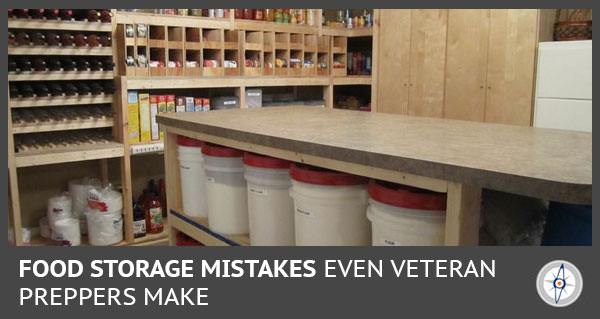
The Rule of 3 states that you can go:
- 3 minutes without air
- 3 hours without shelter
- 3 days without water
- 3 weeks without food.
Now, we don’t know about you, but we are not big on the idea of going 3 weeks without food. The first 3 items on the Rule of 3 might kill you, but 3 weeks without food will certainly make you wish you were dead.
So as a responsible prepper, it’s important that food storage is a part of your plans. There are many schools of thought on what is best: freeze-dried foods, bulk foods, canned foods, etc. All of these have merit and should have a place in your food storage strategy.
Proper food storage is a minefield of potential errors that can ruin your preps. You don’t want to find out in an emergency that your best laid plans have gone to waste.
So let’s take a look at some of the mistakes that even veteran preppers make from time to time:
Taste & Flavor Related Mistakes
Storing Foods You Wouldn’t Normally Eat
At first glance, you would probably say “In an emergency situation, I’ll eat whatever I have to in order to survive.” We can tell you from personal experience that if you have kids, that won’t fly. If you do end up in a prolonged SHTF scenario, you are going to want to somewhat like the taste of the food you eat every day.
In addition, if you are rotating food (which you should be), it’s less stressful on the wallet to actually eat your soon-to-expire food instead of just throwing it away and restocking. If your preps aren’t foods you normally eat, you’ll likely just end up wasting money
Omitting Comfort Foods
They are called comfort foods for a reason. Sweets and other tasty goodies can be a huge morale lift in a lousy situation. Stock away a couple bags of hard candy, brownie mixes and the like. Survival doesn’t have to be totally miserable. For those of you that are used to your daily dose of Starbucks, coffee & tea bags probably fall into this category as well.
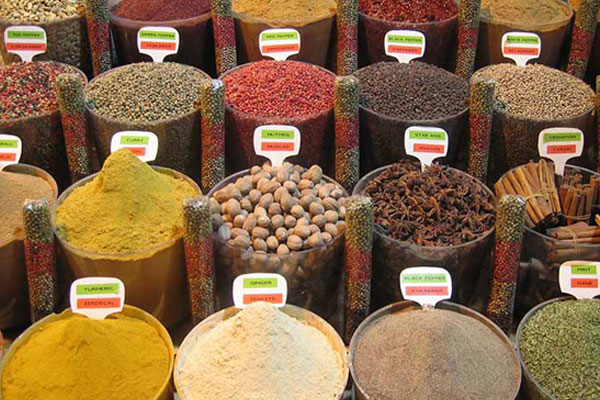
Not Stocking Spices & Condiments
You may have to eat a steady diet of beans and rice, rice and beans. This doesn’t mean that you have to avoid flavor. Salt, pepper, sugar and other condiments can help spice up your dishes.
Not Storing a Variety of Foods
Spices and condiments can only do so much to a dull selection of foods. You will want to store a variety of food, both to avoid boredom, and also to make sure you have a good mix of nutrients. Which leads us to…
Nutrition Related Mistakes
Focusing on Calories But Not Nutrition
Many of the emergency ration bars and even some freeze-dried meals really focus on giving you a bunch of calories for energy. While this is important, you need long term foods that also provide you with proper nutrition.
As the Patriot Nurse says below “Calories are King, but Nutrition is Queen!”
Ignoring Special Dietary Needs
One of our staffers lives in a completely gluten free home. Early on, one of their children was diagnosed as being extremely gluten intolerant so they have to make adjustments to their food storage plan to accommodate his dietary needs. Fortunately many food storage providers are starting to provide gluten free options. Other dietary needs to be aware of include those of babies, children and the elderly.
Forgetting to Stock Vitamins & Supplements
In a long term SHTF situation, you are most likely not going to be eating as healthy as you normally would. Food with a 25 year lifespan can only pack in so much nutrition. Having a good multi-vitamin and a stockpile of Vitamin C is a good place to start. A whole food supplement like Green Vibrance is also recommended. You can’t function properly under prolonged stress if you are sick.
Being Totally Dependent on Food Storage
The best and most nutritious foods for the body are fresh foods. Fresh fruit and fresh veggies could be hard to come by if the Zombie Apocalypse hits us.
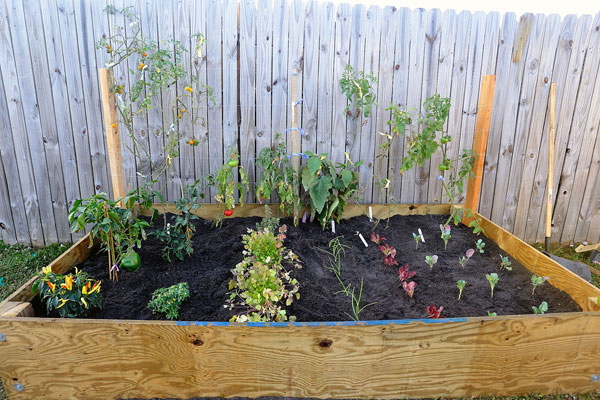
Think about cultivating a small garden, and learning to hunt or fish to supplement your food stores.
Forgetting to Store Supplies for Your Pets
You don’t want to have to give your “people food” to your pets during an emergency. Plus it’s not the best option for them nutritionally. So be sure to put away some supplies for your favorite critters.
Food Storage Related Mistakes
Storing Foods in Inconvenient Packages
You are much better off putting foods like rice in smaller 1 gallon mylar bags, then storing the whole lot in a sealed 5 gallon bucket. You are not likely ever going to cook 5 gallons of rice at one time. Your food will stay fresh longer if you break it up into smaller packages and then open those as need occurs.
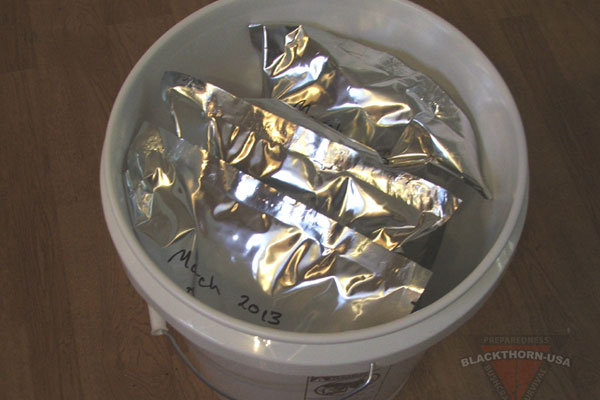
NOTE: When stacking 5 gallon buckets, place a board between the layers of buckets to prevent the lids from cracking. Food can be heavy!
No Rotating Out of Date Food Items
It’s a good practice to label the purchase date of your canned goods with a Sharpie. Canned foods may be non-perishable, but that doesn’t mean they will last forever. Boxed cake mixes will also go bad as the leavening dies. Find a system that works well for you. Maybe it’s a notebook log of your inventory, or perhaps just an annual clean up. Or even better, something like this…
Not Planning for Nature
When it comes to your food storage, you need to be mindful of what sort of forces nature might bring against you. If you are in an area that is susceptible to flooding, you need to make sure your food preps are up high where they can’t be damaged by water. If tornadoes, hurricanes or earthquakes could potentially hit you, then you need to secure your cans and glass jars so they can’t be knocked off the shelves in a storm.
Improper Food Temperatures
While the garage is certainly a convenient place to store your food, it is also the one place that will experience the most temperature fluctuations. Going from extreme heat to extreme cold is worse for your food than sitting at a steady warm temperature. In addition to temperature, your food storage has 5 other enemies it must combat: oxygen, moisture, light, pests & time. Take a minute to read “The 6 Enemies of Food Storage” for additional information.
Poor Labeling & Inventory Management
We mentioned this before, you must have a clear system for labeling and inventory management. If you don’t, you’ll end up having to throw out a lot of food as you don’t know if it has gone bad or not. Label cans and buckets with Sharpies. Keep a notebook with a list of what you have, and where you have stored it.
Cooking Related Mistakes
Not Knowing How to Cook What You Have
Unfortunately, many preppers just get a checklist off the internet and blindly purchase what is on the list. They end up with items in their survival pantry that they have no idea how to prepare. For example, don’t store a bunch of wheat if you don’t know what to do with it. That said, take the time to learn what to do with wheat…and then store it. Make sure you have the equipment you need to cook the foods you are storing (wheat grinder, blenders, etc.).
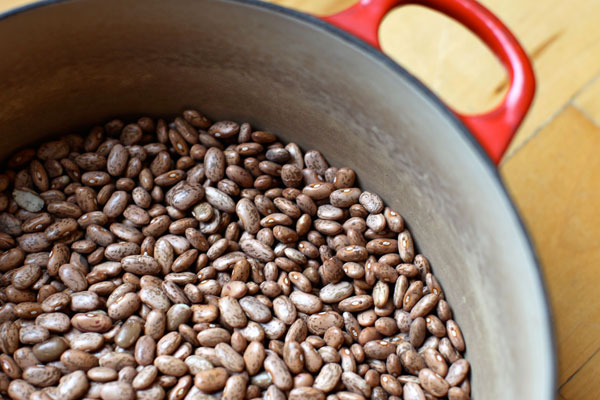
Learn how to cook dry beans, and how to flavor your rice dishes. Practice!
Not Storing Staples for Basic Recipes
Often overlooked ingredients like baking powder, baking soda, yeast, cooking oil, powdered eggs, powdered milk, sugar, and salt are critical for many recipes. You can have 100 pounds of wheat, but without these other essentials there will be no bread.
Not Storing Enough Liquids for Cooking
Foods like pasta and water require lots of water to make them edible. You’ll also need water for reconstituting your freeze-dried supplies. Check out What Every Prepper Ought to Know About Water Storage for tips on how to put enough water aside for drinking, bathing and cooking.
Not Having Alternative Fuels Sources for Cooking
In a major sweeping SHTF scenario, it’s very likely that you will not have power. Even a strong hurricane coming through can take your power down for multiple days.
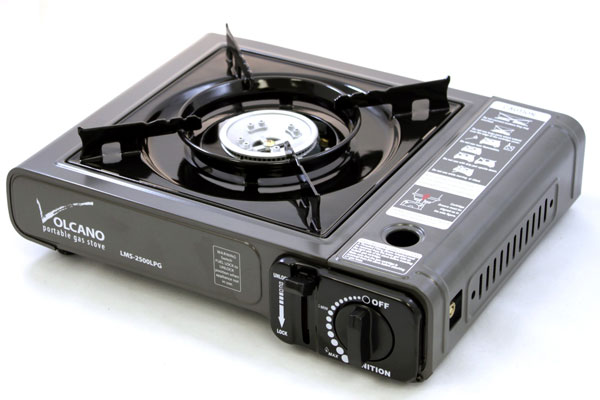
You can get a butane or propane stove fairly inexpensively to keep your kitchen going if the grid does down. Be sure to keep a plentiful supply of fuel for your stoves as well.
Not Having Enough Quick & Easy Meals
Being in a survival situation for a lengthy period of time will tax you both physically and mentally. We recommend having some quick-to-cook foods like MREs and freeze-dried meals for times when you just don’t have it in you to prepare complicated dishes. Canned soups are also ready to eat right out of the can with just a little heating. Keep a mixture of bulk foods along with heat-to-eat meals as part of your food prep strategy.
=====
Become a Survival Dispatch Insider …
We bring together survival enthusiasts and preppers to share skills and knowledge, so you can enhance your preparedness for emergencies and ensure the safety of you and your community.
The Results You’ll Get …
Our community, courses, and memberships are pretty special. We focus on the ways it will make a huge difference in your life.
Here are a few of the things you’ll be able to do as a member of Survival Dispatch Insider …
1) Improve your emergency preparedness by learning survival skills and strategies from experienced preppers.
2) Build lasting connections with like-minded individuals that share your passion for safety and readiness.
3) Access a wealth of knowledge and resources to assist in protecting you and your community during unexpected situations.
Click HERE to get started.
=====
